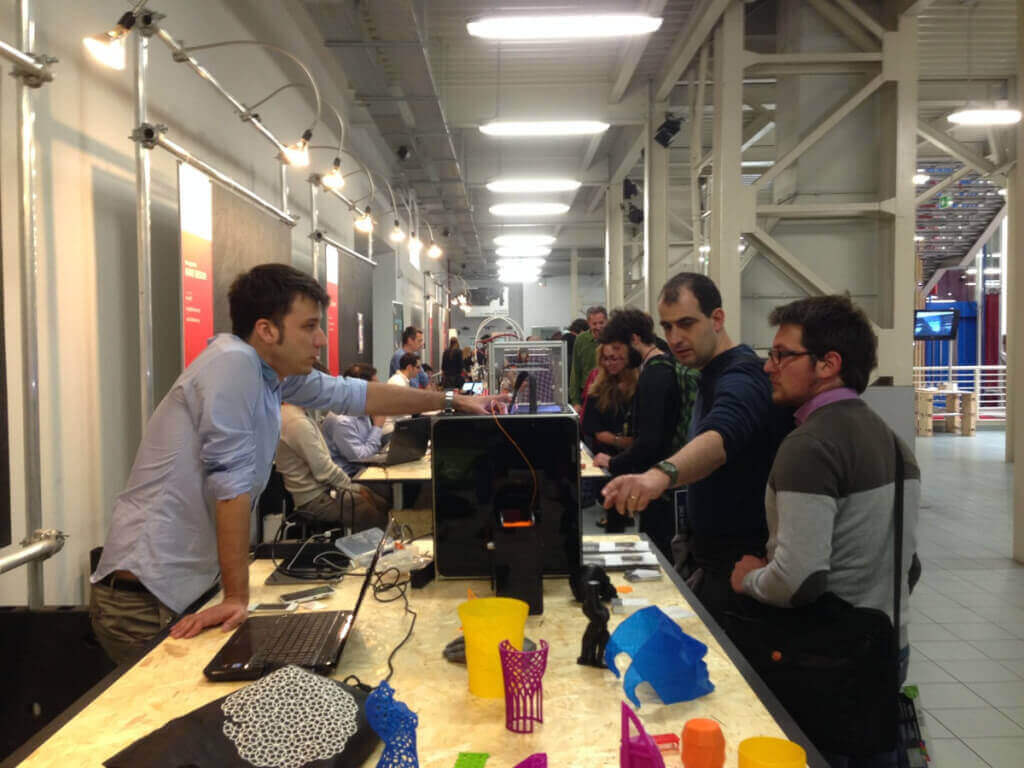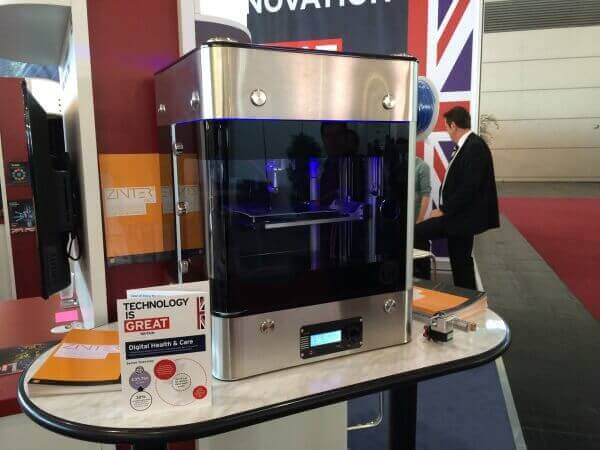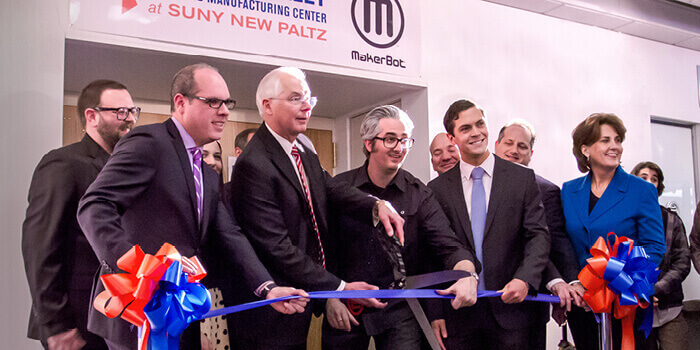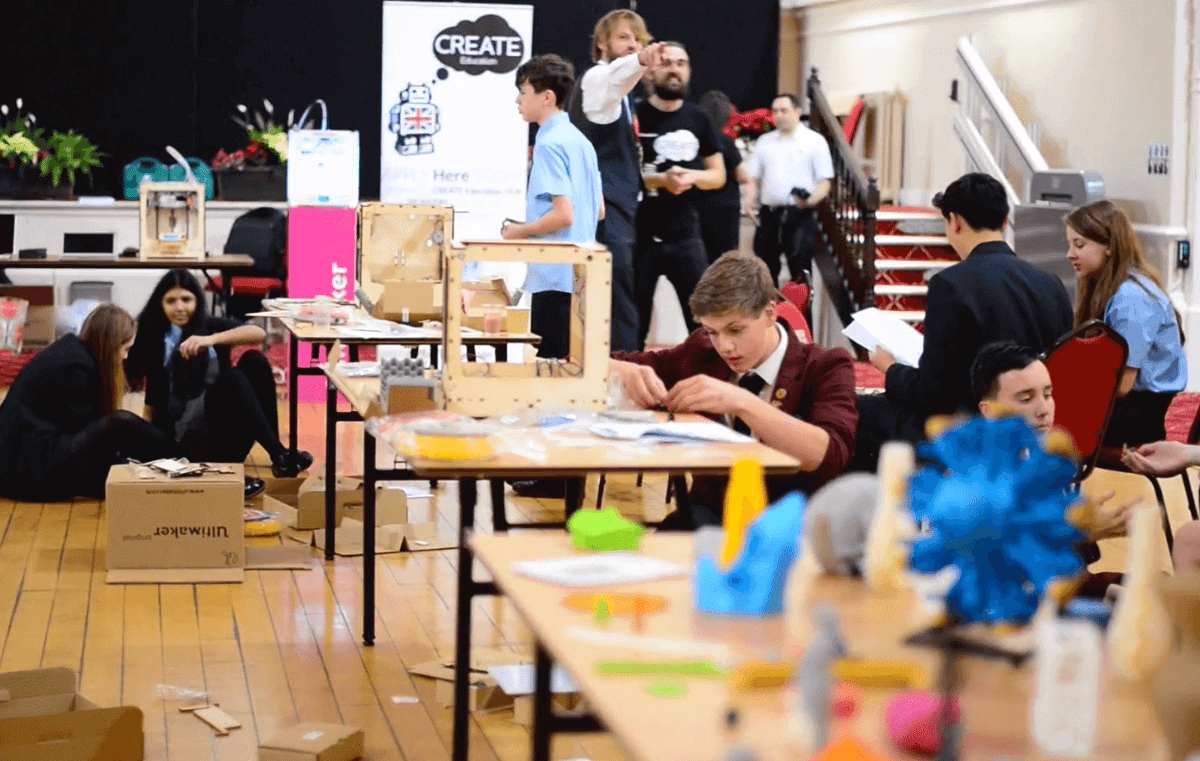Today, it is more imperative than ever that schools educate their students about the emerging digital fabrication technologies. Especially those of the “additive kind” (i.e. 3D printing) that are going to fundamentally change the world and the way we manufacture goods. With 3D printing becoming affordable, accessible and useful, this is the point where many schools are launching special educational programs aimed at the exploration of the basic principles of additive manufacturing. The good news is that there are already many fully featured, “ready to implement” programs created by companies with a track record in the field. In this post, we will present five of the most prominent solutions currently available.
LeapFrog jumps into schools

LeapFrog’s “The Educational Package”includes the Creatr Dual Extruder 3D printer, a license for the Simplify 3D software, 30 USB sticks, 8 rolls of PLA filament, 8 rolls of ABS filament, text books and training for the educators. The price is almost 2300 Euros, and there is a special discount for schools. LeapFrog’s lesson plans are divided into two categories depending on the age of the students. There is a book that contains 14 lessons aimed at children between 10 and 12, and a book for students from 13 to 18 years with three more advanced lessons/projects on 3D printing.

The software is quite easy to understand and use; preset options will take care of support material configurations, etc. The Creatr printer is ideal for use in schools as it is very robust, tolerates misuse and frequent operation and requires little maintenance. It can print two types of materials simultaneously, the object sizes can be relatively big and there is only one open side rendering the machine temper-proof and less prone to cause burning accidents.
IonCore, Education in the UK

IonCore has started an initiative in early 2014 aiming at generating enough donations to be able to support 3D printing education programs for schools, universities and other institutes based in the UK. Schools register on the IonCore webpage and try to form a community of financial supporters (parents, local communities, organizations and other public donors). As soon as the fund-raising goal is met, IonCore delivers a Zinter Pro printer along with its accompanying education package.
The Zinter Pro is a state-of-the-art 3D printer with large capabilities that allow it to provide the students with a first-class experience of what 3D printing is about. Fitted with two individual extruders, this machine can print two materials/colors at the same time while its rigid frame is completely heat-sealed. It can print items of 200x200x200mm reaching a resolution of up to 10 micron using ABS, PLA, PVA, Nylon, and PC! The software tool that comes with the printer is the powerful yet simple to use Simplify 3D.
MakerBot Academy for the masses

Being a leader in the field, MakerBot could not possibly stay out of 3D printing education initiatives. In fact, it has been leading in this segment as well. Working together with the America Makes association and turning to supporters for donations, Makerbot made it possible for educators in the USA and around the globe to obtain their high-precision and quality machines. Its goal has been to get a 3D printer into every school.
The original MakerBot Academy bundle included the MakerBot Replicator 2 printer covered by the MakerCare protection plan (1 year of free support) and MakerBot’s filaments. Starting in 2014, MakerBot introduced the MakerBot Innovation Center (first in the USA in Europe). This is a complete package that allows schools and universities to quickly set up an entire “3D printer farm”, which can be networked and thus accessed from any of the educational facility’s departments.
Ultimaker’s CreateEducation

Create Education is a 3D printing awareness portal and online community of enthusiasts. Collaborating with Ultimaker, Europe’s leading 3D printer manufacturer, the portal has started the CREATE education project aimed initially at British and Irish schools. The program’s goal is to help educators prepare their students for professions that do not even exist at the moment.
The CreateEducation website is home to some interesting lessons contributed by Ultimaker, Cardiff National Museum and Outwood Academy Valley. Besides the lessons, there are quite a lot of 3D model files shared among the members of the community, explanatory how-to videos (e. g. on calibrating printer, loading filaments and updating firmware), schemes of work, qualification opportunities for educators and workshops that take place in the students environment. The special discounts that apply to educational institutes are 5% for 2-9 machines and 10% for 10 or more Ultimakers.
“Stampa in 3D” with Sharebot Academy
Sharebot is an Italian 3D printer and filament manufacturer with active educational and training programs for both their clients and students interested in the technology. Sharebot is building high-quality, professional-grade machines that are ideal for education and extensive experimentation. Starting from the training courses, there is the basic course that covers the use of the Sharebot 3D printer and the advanced course that provides printing tips, filament loading procedures, printer troubleshooting, and Slic3r settings. Basic costs 50 Euro for Sharebot clients and 100 for non-customers, while the advanced course costs 200 and 250 Euro, respectively.
Then there are Sharebot’s School Academy programs that cover elementary, middle, high schools and Universities. Children start their endeavor by studying how to use their analytical skills to solve problems by printing three-dimensional objects. Next, they learn how to use their imagination to create printable digital models, and finally they produce a prototype based on an original idea. High school students are encouraged to work in teams towards the creation of more complex objects from scratch, while the University students are thrown deeper into Architecture and Engineering design and prototyping, as well as building items that relate to the subject of their studies directly (chemical molecules, historic artefacts, wind turbines, etc.).
With all these choices, the leading desktop 3D printer manufacturers have shown that education is one of their top priorities. The only question is: Should we still call it school if children love to attend it?
License: The text of "3D Printing in schools" by All3DP is licensed under a Creative Commons Attribution 4.0 International License.